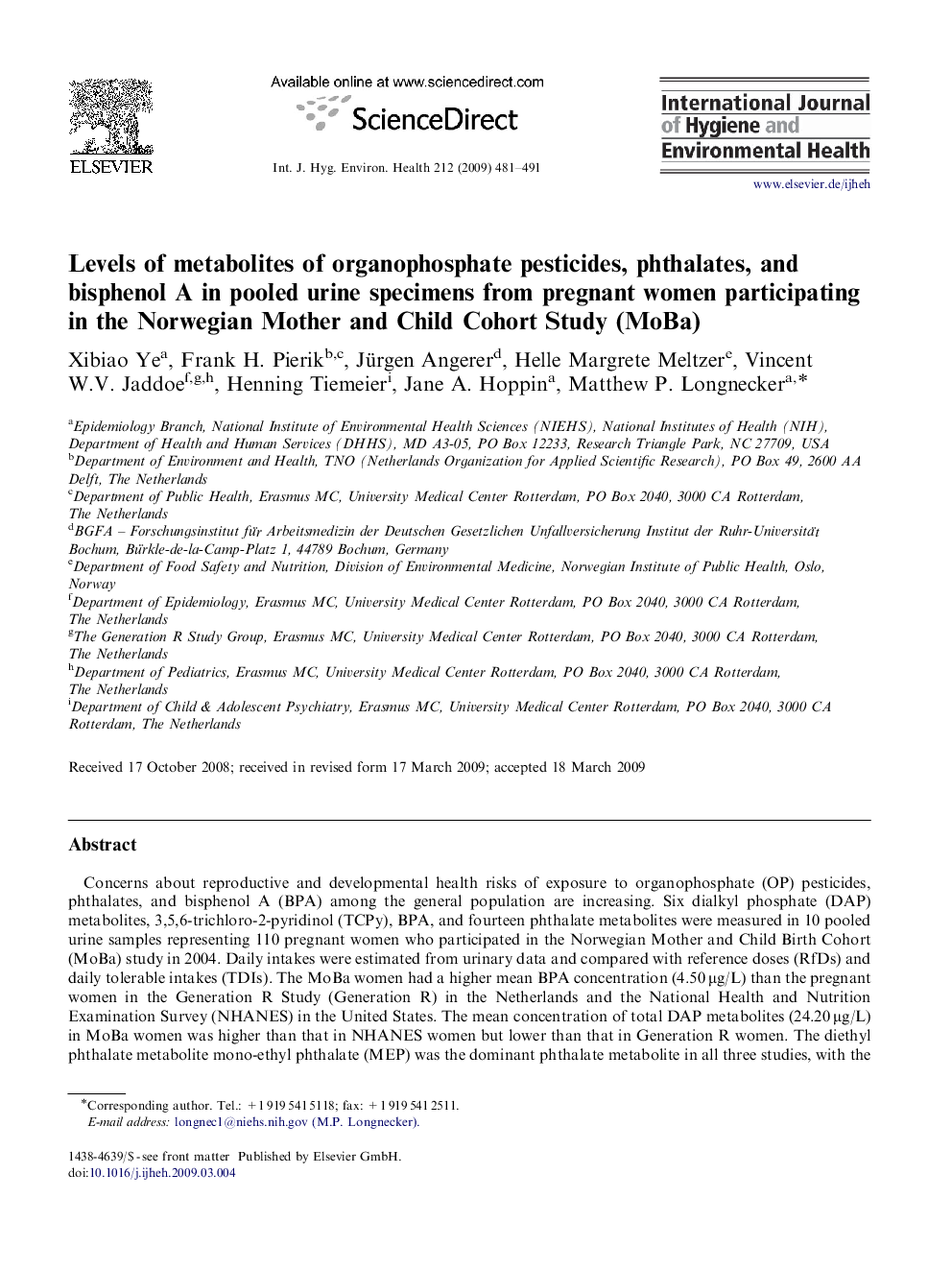| Article ID | Journal | Published Year | Pages | File Type |
|---|---|---|---|---|
| 2589032 | International Journal of Hygiene and Environmental Health | 2009 | 11 Pages |
Concerns about reproductive and developmental health risks of exposure to organophosphate (OP) pesticides, phthalates, and bisphenol A (BPA) among the general population are increasing. Six dialkyl phosphate (DAP) metabolites, 3,5,6-trichloro-2-pyridinol (TCPy), BPA, and fourteen phthalate metabolites were measured in 10 pooled urine samples representing 110 pregnant women who participated in the Norwegian Mother and Child Birth Cohort (MoBa) study in 2004. Daily intakes were estimated from urinary data and compared with reference doses (RfDs) and daily tolerable intakes (TDIs). The MoBa women had a higher mean BPA concentration (4.50 μg/L) than the pregnant women in the Generation R Study (Generation R) in the Netherlands and the National Health and Nutrition Examination Survey (NHANES) in the United States. The mean concentration of total DAP metabolites (24.20 μg/L) in MoBa women was higher than that in NHANES women but lower than that in Generation R women. The diethyl phthalate metabolite mono-ethyl phthalate (MEP) was the dominant phthalate metabolite in all three studies, with the mean concentrations of greater than 300 μg/L. The MoBa and Generation R women had higher mean concentrations of mono-n-butyl phthalate (MnBP) and mono-isobutyl phthalate (MiBP) than the NHANES women. The estimated average daily intakes of BPA, chlorpyrifos/chlorpyrifos-methyl and phthalates in MoBa (and the other two studies) were below the RfDs and TDIs. The higher levels of metabolites in the MoBa participants may have been from intake via pesticide residues in food (organophosphates), consumption of canned food, especially fish/seafood (BPA), and use of personal care products (selected phthalates).
